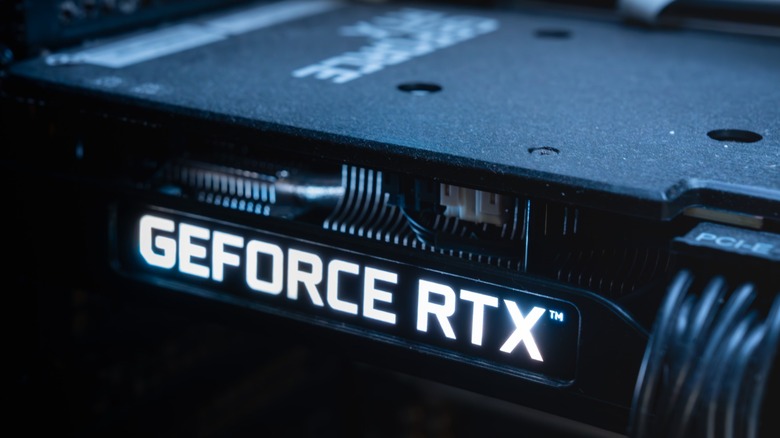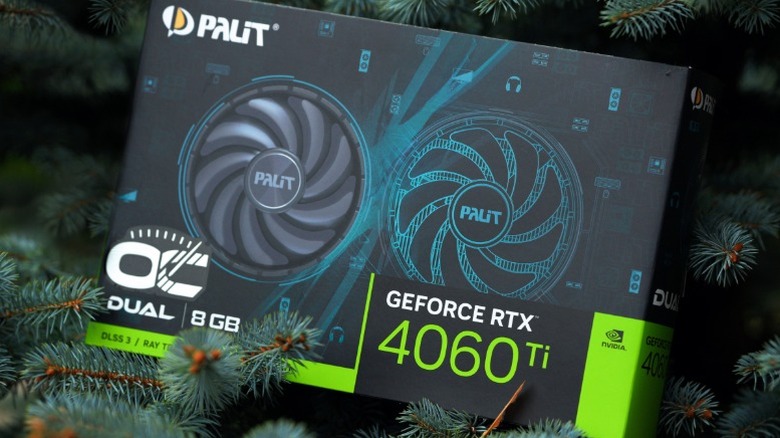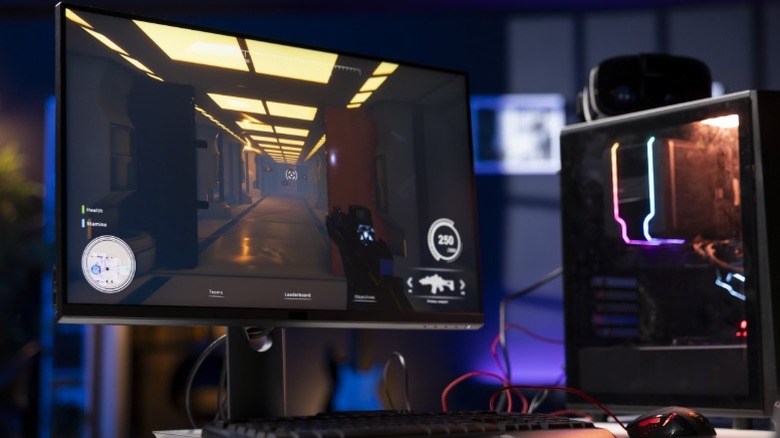What Does RTX Stand For On NVIDIA GPUs?
From the futuristic dystopian streets of "Cyberpunk 2077" to the detailed wastelands of "Red Dead Redemption 2," there is a lot that video games have to offer. While consoles like the PlayStation 5 and Xbox Series X remain the quickest and oftentimes the cheapest way to enjoy AAA titles, enthusiasts will always default to building a rig of their own. Major components that directly affect the gaming performance of a PC include the CPU, GPU, RAM, and storage.
More specifically, a good GPU will let you run your favorite games at not just a higher resolution but with plenty of frames to spare. Competitive titles like "Valorant" may not require as much horsepower to run, but if you're building a gaming PC, you might as well make sure it's equipped to churn out any other modern game you throw at it. Nvidia and AMD are both big names in the PC gaming industry, but Team Green enjoys a whopping 88% market share, as reported by Jon Peddie Research.
You can pick up an Nvidia graphics card at any budget, and purchasing used components from third-party marketplaces is a decent option if you're on a tight budget. Nvidia's nomenclature for its consumer-grade graphics cards isn't as bad as AMD's or Intel's catalog, but it can still leave first-time PC builders scratching their heads — especially with the whole "RTX" branding. How are Nvidia's new cards different from the previous GTX series, and does RTX even stand for anything?
What does RTX mean on Nvidia GPUs?
Founded over three decades ago, Nvidia is credited with revolutionizing graphics technology. The GeForce 256 is considered as the world's first GPU, and we've since seen nothing but exponential improvements in performance with nearly every new generation of cards that have hit the shelves. The GTX series is perhaps the most iconic lineup of GPUs and ended up dominating the gaming space in the 2000s and 2010s.
In 2018, Nvidia's CEO Jensen Huang announced the RTX series, which has now replaced every tier of Nvidia's gaming GPUs, from budget graphics card options like the RTX 4060 all the way up to the latest RTX 5090. Unfortunately, there is no official source to confirm what the term "RTX" stands for. Unofficial sources have settled on RTX being an abbreviation of "Ray Tracing Texel eXtreme," with GTX standing for "Giga Texel Shader eXtreme."
Nvidia itself hasn't explicitly mentioned these terms in official press releases or launches, and for all we know, GTX and RTX might be nothing more than catchy marketing lingo that the company has cooked up. However, a distinguishing factor between the two series is the heavy emphasis on Ray Tracing capabilities on the RTX cards. Nvidia's product page for RTX is littered with terms such as Ray Tracing, DLSS, and AI — all of which are prominent features in the new GeForce RTX graphics cards. In summary, whenever you spot the term "RTX," Nvidia likely wants you to think of Ray Tracing.
GTX vs RTX: What features do you gain?
If we're sticking to the "Giga Texel Shader eXtreme" and "Ray Tracing Texel eXtreme" labels that the community has settled on, let's quickly unpack these terms. In the same way pixels make up an image, a texel is the smallest part of what makes a texture — which is what is mapped onto 3D models in a video game. The "Giga" in GTX refers to a billion texels, possibly highlighting just how powerful these cards were at their time.
RTX, on the other hand, is all about Ray Tracing. An RTX card is able to use its RT Cores to simulate real-world lighting, which is how you get realistic reflections and shadows. This is why a game with ray tracing on and off looks substantially different, since you're no longer relying on pre-baked lighting techniques that make a scene look static and are instead leveraging ray tracing that works in real time.
Nvidia's RTX cards also boast support for DLSS features, that include frame generation and resolution upscaling — allowing you to game at a much higher FPS, thanks to AI. Of course, there are both pros and cons of upgrading to Nvidia's RTX cards — the biggest one being the price, since you're likely not going to find the latest GPUs at MSRP. Nvidia's reliance on using AI to effectively generate fake frames is also something that's become controversial — raising doubts about actual native performance gains in these cards.


